
30-day money-back guarantee *
30-day money-back guarantee *

L'tap water in France is subject to very strict health controls. Yet it almost systematically contains undesirable contaminants such as chlorine, pesticide residues, heavy metals, microplastics and PFAS.
In addition to a taste or smell that can sometimes be unpleasant, more and more French people are worried about health consequences of these pollutants.
Le activated carbon is now one of the most popular and affordable ways of improving the quality of tap water. There are many options on the market, including binchotan carbon sticks, filter carafes, tap or under-sink filters... but not all of them are equally effective!
So.., Is activated carbon really the right solution for purifying tap water? What are its advantages? How long does it last? And above all, which systems are the most effective against contaminants in the water? Our answers in this article!
Activated carbon is a form of carbon treated to have small pores on its surface, with a capacity adsorption (not to be confused with "absorption"!). It is generally obtained from organic materials such as woodthe coconut shells or even some types of coal. The material is first carbonised, then "activated" by a chemical treatment or thermalcreating a porous structureready to capture all kinds of impurities!
In the field of water purification or filtrationactivated carbon is often used in domestic water filters to remove substances such as chlorine, sediments, microplastics, etc. As the water passes through the filter, the contaminants are removed. captured and withheld by activated carbon, giving the water a better smell, taste and, above all, quality.
For example, if you have already used a carafe filter in your kitchenThere's a good chance that it has an activated carbon filter!
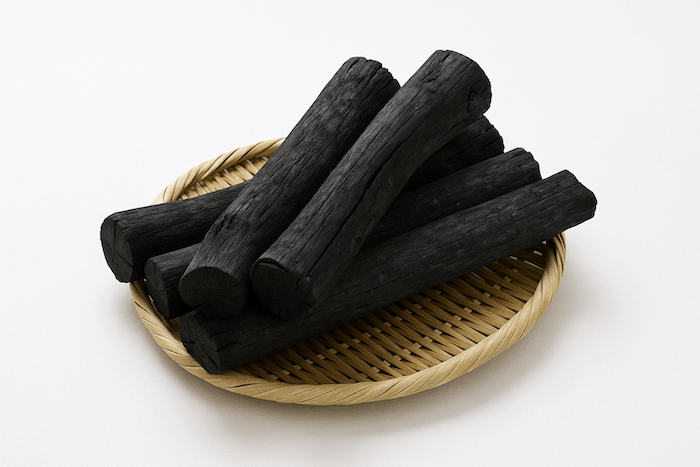
Activated carbon is now one of the most effective the most accessible natural solutions to improve the quality of tap water. Unlike a mechanical filter, it attracts and retains many undesirable substances on its porous surface. The Opropre Turquoise filterfor example, contains an "unfolded" adsorption surface area of more than 1000 m² per gram of activated carbon, equivalent to the surface area of 100 football pitches in a single filter !
Using activated carbon is also an excellent alternative to mineral water bottles. Not only does this allow you to reduce your consumption of plastic, it also saves you money: bottled water costs on average 300 times more expensive than tap water!
Finally, the use of activated carbon in tap water treatment is particularly effective in eliminating certain specific contaminantsThese include chlorine, sediments, and even heavy metals, microplastics and pesticides for certain advanced systems such as Opropre Turquoise.
The quality of activated carbon varies considerably depending on where it comes from, how it is treated and how it is used. Poor quality activated carbon, often from fossil sources or badly transformed, can not only be ineffective to retain pollutants, but also release undesirable substances into your water like tar or ashes!
The quantity of activated carbon used also plays a decisive role. For example, the filter carafesalthough accessible, contain a small amount of activated carbonThis limits their ability to treat high levels of pollutants over time. This is why they need to be replaced regularly (every 3 to 4 weeks), at the risk of posing a danger. bacterial developmentas we explain in this article on carafe filter.
On the contrary, high quality activated carbon used in large quantities, such as the filter Opropre Turquoise which contains up to 15 times more activated carbon than a conventional filter, captures a wide range of contaminants and has an extended service life (6 months' use).
To better understand the differences between the main activated carbon filtration solutionsHere is a comparative table summarising their effectiveness against the various pollutants:
|
Element filtered, reduced or eliminated |
Classic carafe filter |
Tap filter |
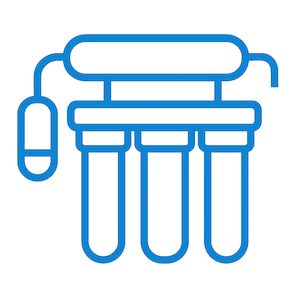
Osmosis unit |

Opropre under-sink filter |

LAVIE Purifier |
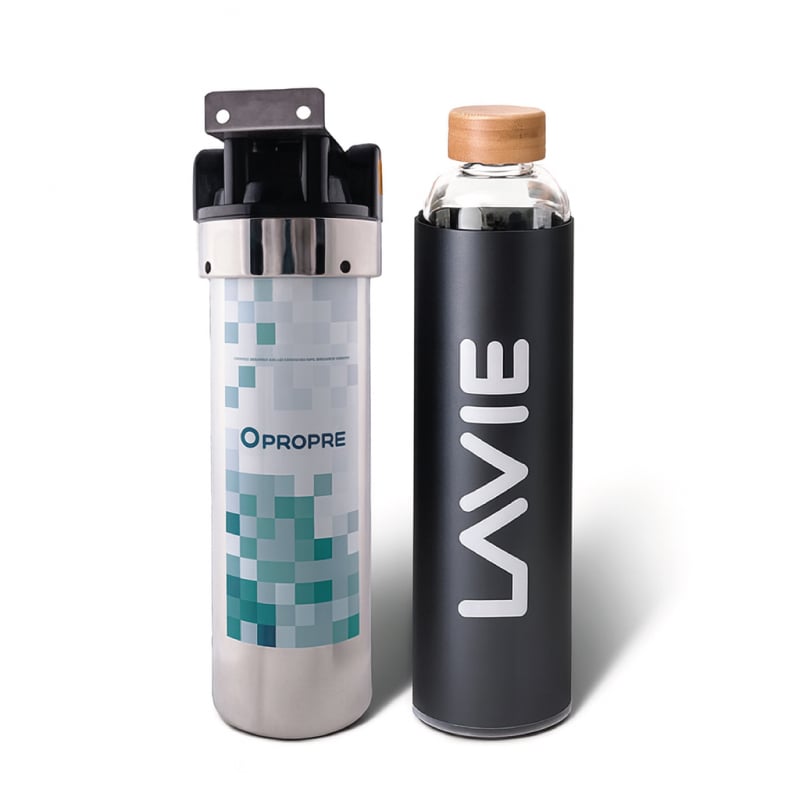
Peace of mind pack (Opropre + LAVIE PURE) |
| Chlorine | ✅ | ✅ | ✅ | ✅ | ✅ | ✅ |
| Sediment | ✅ | 🟠 | ✅ | ✅ | ❌ | ✅ |
| Bacteria | ❌ | ❌ | ❌ | ❌ | ✅ | ✅ |
| Virus | ❌ | ❌ | ❌ | ❌ | ✅ | ✅ |
| Medicines | ❌ | ❌ | ✅ | ✅ | ✅ | ✅ |
| Pesticides | ❌ | ❌ | ✅ | ✅ | ✅ | ✅ |
| Heavy metals | 🟠 | 🟠 | ✅ | ✅ | ❌ | ✅ |
| PFAS | ❌ | ❌ | ✅ | ✅ | ❌ | ✅ |
| Microplastics | ❌ | ❌ | ✅ | ✅ | ❌ | ✅ |
| Conservation of minerals beneficial | ❌ | 🟠 | ❌ | ✅ | ✅ | ✅ |
| Discover | Discover | Discover |
Le binchotan coal is a special type of activated carbon from Japan, made from branches of the ubamegashi oak tree. The wood is slowly carbonised at a very high temperature, then rapidly cooled to create porous sticks, marketed for their ability to adsorb odours and certain impurities from water.
But behind its natural and enduring image, binchotan is actually very energy-intensive to produce (combustion for several days at over 1,000°C, high CO₂ emissions, etc.).
If the use of a charcoal stick can improve the taste of tap water and reduce the smell of chlorine, the scientific advice on binchotan have not confirmed any effectiveness on the most problematic pollutants, such as pesticides, heavy metals, drug residues or the notorious PFAS.
What's more, there are many imitations on the market sold under the name of 'binchotan' made from cheap, poorly carbonised or chemically activated wood, which can release residues of harmful products or tar into the water.
Well, contrary to certain commercial promises, boiling a stick of binchotan is not enough to regenerate its adsorption capacity. This only sterilises it, but does not "unclog its pores". To regain its original effectiveness, it would need to be activated at very high temperatures, which is impossible to reproduce at home. In practice, therefore, it has to be replaced regularly, and there is no reliable information on its lifespan.
💧Read also : Binchotan carbon for filtering water: really effective?
As we saw earlier, not all activated carbons are equally effective. That's why it's essential to turn to more effective and reliable solutions to eliminate all contaminants from tap water.
If the binchotan seduced by its "natural" image, its effectiveness against pollutants is limited and not scientifically proven. Here are the main differences between activated charcoal sticks and LAVIE filtration or purification solutions.
|
Criteria |
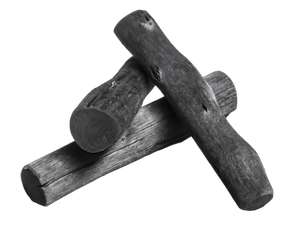
Binchotan coal |

Opropre under-sink filter |

LAVIE UV-A filter carafe |
| Type of filtration | Activated carbon stick | Coconut activated carbon + anti-PFAS targeted resin | Purification by UV-A rays (photolysis of chlorine) |
| Water quality | 💧 | 💧💧💧 | 💧💧💧 |
| Filtered pollutants | Taste of chlorine Some odours | Chlorine Sediment Heavy metals Microplastics and nanoplastics Pesticides PFAS | Chlorine Sediment Bacteria Viruses Traces of medication Traces of pesticides |
| Efficiency | ❌ Unproven (no scientific studies) | ✅ Proven: See our independent lab tests | ✅ Proven: See our independent lab tests |
| Quantity of filterable water per day | ❌ 2 to 3 L maximum (4 hours per litre) | ✅ Unlimited | ✅ Tens of litres per day (15 min to filter 1 L) |
| Duration of effectiveness | A few weeks to a few months (variable, not measured) | 6 months per cartridge (15 times longer than a carafe filter) | Unlimited (No cartridge replacement!) |
| Ecological impact | Oak burnt at very high temperatures (releasing CO2 and fine particles), long-distance transport... | Returnable and refillable LAVIE cartridges. Activated carbon and resin recycled in specialised circuits. | No filters or consumables, low power consumption thanks to LEDs |
| Installation | ✅ None | 🟠 For installation under the sink | ✅ None (mains connection) |
| Purchase price | € | €€ | €€ |
| Recurring price | € | € | None at all! |
| Discover | Discover |
The under-sink filter Opropre Turquoise uses high quality coconut activated carbon and a resin specially developed to capture PFAS, the "eternal pollutants" that escape most consumer filters.
Here are its main advantages over conventional solutions:
💧 Scientifically proven effectiveness: thanks to tests carried out by independent laboratories.
💧 Purer, healthier water: the filters are able to retain chlorine, heavy metals, microplastics and nanoplastics as well as PFAS.
💧 An ecological and responsible solution: our filter cartridges have a 6-month life and are returnable for recharging, without generating unnecessary waste. Used activated carbon and resin are recycled in specialised industrial circuits.
Opropre Turquoise is therefore the guarantee of a pure, high-quality waterstraight from the tap!
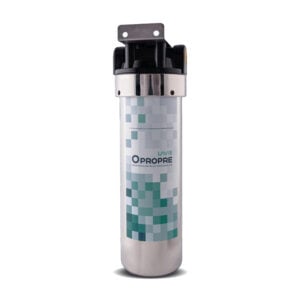
In addition to Opropre activated carbon filters, LAVIE water purifiers eliminate bacteria and viruses thanks to an innovative, patented technology: the chlorine photolysis by UV-A radiation.
In just 15 minutes, UV-A rays :
All this, while preserving all essential minerals in waterof course!
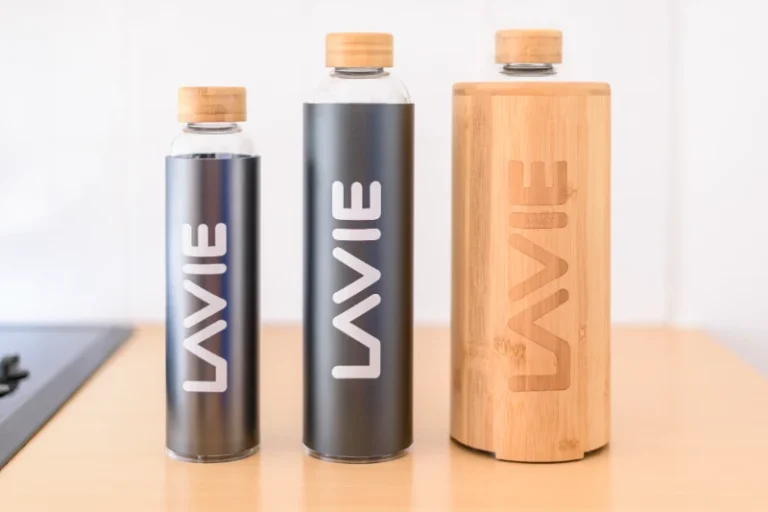
La life of an activated carbon water filter is an important criterion to take into account, because a saturated coal loses its effectiveness and can even become a breeding ground for doping.evelopment of bacteria.
If there are no reliable sources of information about the optimum service life of the binchotan coalHowever, it should be pointed out that it needs to be replaced regularly (with a lifespan of several weeks to a few months) because boiling it is not enough to reactivate its adsorption capacity.
The filter jugscontain a small amount of activated carbonThis greatly limits their effectiveness. To avoid the risk of bacterial proliferation, we recommend changing the filter. every 3 to 4 weeks. This represents a very substantial recurring budget, not to mention the considerable environmental impact of non-recyclable cartridges.
Le Opropre Turquoise under-sink filter is the most effective and long-lasting activated carbon filtration solution. Each cartridge contains a large quantity of coconut activated carbonwhich ensures its effective for 6 months. To limit their environmental impact, each cartridge is returnable for refilling.
Discover now all the LAVIE filtration solutions for healthy, pure water at home!
Yes, activated carbon purifies tap water. Thanks to its immense porous surface, it adsorbs certain undesirable substances such as chlorine, heavy metals, pesticides and other chemical pollutants.
However, not all filtration methods that use activated carbon are equally effective. For example, no scientific study has demonstrated the ability of binchotan to filter the main contaminants from water, while solutions such as Opropre Turquoise under-sink filter have a very high filtration efficiency.
Activated carbon is particularly effective in eliminating :
No, activated carbon is not dangerous for your health when it is of good quality and used correctly.
The risk comes mainly from poorly manufactured carbon, which may contain undesirable pollutant residues.
Another precaution: an activated carbon filter that is saturated or used for too long can become a breeding ground for bacteria and release accumulated pollutants. If you follow the instructions for use and replace your filter regularly, activated charcoal will stay in place for as long as you need it. a safe and effective solution for improving the quality of tap water.
Before using for the first time, rinse the activated charcoal stick under cold water to remove any charcoal residue. Then boil in a pan of water for 10 minutes to sterilise it.
Once cooled, place the stick in a carafe filled with tap water. Let the water stand with the activated carbon for a few minutes. 4 to 8 hours.
Your water is ready to drink! Remember to boil the stick regularly to sterilise it.
Want to keep up to date with our water-related articles?
Subscribe to our Newsletter below
and get -5% on your first order!